You are currently browsing the monthly archive for June 2012.
This article will be more of a personal one than others, covering my thoughts on anime and a defense of anime (and animation in general) as an important and respectable medium. This will probably turn into more of a half-hearted rant and a stream of consciousness-style piece, so bear with me if you will. Shortly following this will be another article featuring a short list of anime-related terms and tropes along with definitions, which I will be referring to in many of my upcoming anime reviews.
Anime has always been a touchy subject since the industry expanded beyond Japan’s borders. I personally love anime, for its diverse methods of storytelling and the fact that most series actually end. When compared to live-action TV shows, which are typically cancelled before their time or far overstay their welcome, anime is generally planned much better. I am not an avid watcher of American cartoons, but I also will not proclaim anime as the better medium or vise versa.
Whether it’s a series, film or anime-styled video game, there are those who will immediately dismiss it as low-brow, fanservice-filled crap based on the anime art style. Or even worse, they will assume its kiddy fare, based solely on the fact that it is ANIMATION AT ALL. This kind of thinking is quite infuriating to me, but has a legitimate source in common misconceptions that popular media and culture have drilled into their heads.
The first misconception is quite rampant, despite being defied repeatedly. It is the idea that all animation, regardless of content, is and should be targeted towards children. In North America and a host of other countries, that idea is unfortunately reinforced by most of the animation produced there. Shows such as The Simpsons and Family Guy, and (somewhat) more mature animated films such as Rango have stood against this misconception, but have ultimately done little to change it. The problem is that even adult-oriented animation tends to be comedic in nature: rarely is an American cartoon both serious AND mature, mainly due to the bottom line of cost versus risk. Producers are simply unwilling to make mature content, sticking to the safer option of children’s programming that MIGHT throw in a couple jokes for the parents so they don’t get bored.
The idea of animation only being for children was in fact born out of the late 1950’s, when the age of theatrical animated shorts came to a close due to the comparatively lower cost of live-action film and TV. Animators turned to the small screen as a result, and produced lower-quality animation to cut their cost. The success of shows like Scooby-Doo made them realize that children were their best source of income, and pandered almost exclusively to them with low-cost animation and series that amounted to 30-minute commercials for toys and related products. Within 10 years, the idea that animation was only for kids had been driven into the mind of the public, and was there to stay. This is despite the fact that the majority of animation up until the mid-50’s was intended for adult audiences.
I think that before the “animation is for kids” mindset can truly be broken down, someone has to take a risk, and try to make a big hit out of a serious, mature animated series or movie. I think such a feat would be possible if the young adult market is targeted: series like Family Guy and FX’s Archer have proven to be successful in that regard. Cable channels like FX and Spike boast a high young adult viewership that could prove key in making serious animation successful. As for film, I think that filmmakers that have had previous success with animation, or popular filmmakers that are inspired by animation, such as the Wachowski Brothers, might be able to create a barrier-breaking animated film. The problem of course would be convincing studios to take on such a project. Another idea would be to take inspiration from the past, and create short-form animation to be shown before films like in the 30’s and 40’s. These would be serious, mature shorts that could establish a base for a full-length feature if they become popular. Considering the number of people who enjoy watching movie trailers in theaters, and how short-form animation could be seen as another form of trailer, I think that this could be an effective way to create more interest in adult animation.
The second misconception held by the general public directly concerns anime (which I’ve barely even talked about yet). This is the idea that anime is full of violence and sexual content, and only for socially awkward nerds and obsessed fans with rooms full of action figures. Now this misconception is mainly born out of the fact that most people have had very limited to no experience with anime at all, and their only knowledge of the medium comes from occasional films that manage to get released outside of Japan and throw-away jokes on sitcoms. Thus they tend to stay away from anime in general, while silently agreeing with the mainstream’s ill-informed opinions on the medium. Even if they DO watch anime, it will usually be one of the few dubbed series that air during the day such as Pokemon or Naruto, which are highly edited in order to target children. So they’ll mindlessly lump anime under the first misconception of all animation being for kids.
The second misconception cannot exist without the first being partially shattered: biases against animation in general and anime often relate to each other. Assuming that the first misconception has been broken down, the second misconception could be broken if a mature anime film was released in theaters worldwide, or if a mature series was aired in primetime on American TV. The only anime films that received wide theatrical releases in the U.S. to my knowledge have been Howl’s Moving Castle and Spirited Away, both PG-rated films that were localized by Disney. Many anime series that fit the “mature” moniker have in fact been aired on American TV, but they typically have been aired on channels like Cartoon Network, and are heavily edited for content. Any mature series that are not edited for a young audience have generally aired late at night, ala Adult Swim and the Syfy channel. Targeting an adult audience in primetime would certainly be a risk, but given the right series, could be successful.
Cowboy Bebop, Ghost in the Shell, Monster, Durarara!!, and Outlaw Star are just among a handful of series that could appeal to a wide audience. They have the capability to draw in established fanbases of live-action series like CSI, Grim or science-fiction in general, which feature similar elements of action, politics and mystery. All of these have even aired on American TV before, though Monster was only 8 episodes into its run on Syfy when they cut all their anime programming. These types of series can allow fans of live-action programming to transition into anime that appeals directly to their love of a specific genre, and break down their expectations of the anime medium. Any genre that exists in live-action exists in anime, thus there is an anime out there for every crime show fan, sci-fi junkie and so on.
For my long-delayed first post, we have something a bit older than what I will normally review. P.N.03 appeared to be an interesting video game: a low profile game from Capcom that received extremely mixed reviews. Released in 2003 for the Nintendo Gamecube, it is the least successful member of a series of games dubbed the “Capcom Five”: a series that includes the difficult but very fun Viewtiful Joe, Killer 7 and the hugely popular Resident Evil 4. I bought both P.N.03 and Baten Kaitos: Eternal Wings and the Lost Ocean for 20 dollars at a flea market, so I was pretty excited to add them to my collection.
P.N.03 puts you in the role of Vanessa Z. Schneider, a stylish and sexy freelance mercenary who fights with a full-body Aegis suit (that shows off her assets, of course). She is tasked with infiltrating a CAMS (Computerized Armament Management System) robot facility, and destroying a literal ton of berserk robots. Vanessa’s client, who constantly stays in touch with her via unvoiced Metal Gear Solid radio conversations, keeps their identity a secret. Considering what happens at the end of the game, there’s a legitimate reason the client’s identity is kept under wraps the entire game. That said, there isn’t much enjoyment to be taken from Vanessa’s interactions with the client, and the plot is kept to an absolute minimum (the first instance of voice acting occurs about three-quarters into the game). P.N.03 thus has to rely on gameplay and visuals to keep players interested.
Unfortunately, the gameplay is slow and somewhat underwhelming at best. Vanessa moves much slower than her appearance indicates, and cannot strafe and shoot at the same time. While platforming isn’t too important in this game, Vanessa’s awkward jumping brings back memories of playing as Shinobu in No More Heroes 2. Shinobu’s jumping was much worse, but I still found myself overshooting platforms often. There is an emphasis placed on avoiding the robots’ laser fire by dodging constantly and taking cover behind or under parts of the environment. This type of gameplay could be interesting, if most of the levels didn’t reuse the same types of rooms over and over. Vanessa herself possesses the ability to shoot energy bolts from her hands, and her upgradeable suit has powerful attacks called Energy Drives built into it. These Drives have unique animations and effects, and are among the games’ most impressive visuals. The player has to alternate between shooting and dodging to progress through the levels, making the game feel like an old school shooter or a more involved on-rails shooter.
It is perhaps too involved; as Vanessa cannot strafe long distances without mashing the L or R buttons, and her suit lacks rapid-fire capabilities until you earn them. It’s not too bad at first, but when the level layouts start to repeat themselves, the game becomes a strenuous and repetitive exercise in button mashing. It’s kind of a shame, since the game would probably be more enjoyable if only they didn’t insist on repeating the same level layouts and bosses over and over. The enemies are all robots, but they are all pretty different in terms of appearance and attacks. It is sometimes hard to tell one type of enemy apart from another though, since most of the combat takes place from a distance. The part of the game that allows for the most versatility, though, are Vanessa’s suits. Players are able to upgrade Vanessa’s default suit, and purchase different suits at checkpoints or between missions. Each suit has its own upgradeable capabilities and Energy Drives (1 of which must be bought separately). For this purpose, players collect money from defeating enemies. The amount of money increases if you destroy enemies quickly, and if you make it through a room without taking damage. Players can also accept trial missions between levels to earn more money. The ability to upgrade suits and customize them to fit your style of play creates a system that handsomely rewards continued play. I stuck to the more defensive suits myself, since I wasn’t very good at dodging.
Graphics-wise, the game looks nice and smooth, though the environments are rather plain otherwise. The enemies and Vanessa herself look quite impressive for their time, and it’s obvious that a lot of time was put into Vanessa’s graceful animations. I can’t say the same for the sparse cutscenes, however. The majority of the robots that the player has to take down often teleport in out of nowhere or are otherwise tucked away where they can’t be seen, leading to many frustrating moments when Vanessa is suddenly hit by lasers from unseen enemies. The game’s difficulty is somewhat high and fluctuates greatly, especially if you start the game on normal mode. With the exception of the tough end boss, the bosses are pretty easy to defeat once you get the hang of the controls. It took me several tries to defeat the final boss: I would urge players not to take him on without a fully upgraded suit.
There are a few other small things that make the game more of a chore than it needs to be. Whenever you exit a room, the game insists on showing you a stats screen detailing the enemies you defeated and your score for the room, even if there were no enemies in the room. This is particularly irritating when you have to backtrack to get health or Drive energy power-ups. Vanessa tends to turn around very slowly unless you remember to use the Z button to perform a 180 degree turn; I never got the hang of that myself. The game’s music is all fairly forgettable, though the sound effects are particularly good and alerts the player to incoming attacks.
Overall, I can call this an okay game at best. The gameplay is mildly enjoyable, if a bit repetitive, and the customizable suits and special attacks provide players with some variety as well as an incentive to keep blasting away at those robots. The game looks really good too, despite the uninspired level design. But with how sleek and sexy Vanessa looks in her movements, I was a bit disappointed that they couldn’t incorporate more speed and agility into her moves. P.N.03 doesn’t offer much of anything in terms of story, though, and the characters are bland. Unless you’re a big fan of old school shooters or sexy full-body suits, this game probably isn’t worth the trouble to find.
To top off this review, here’s a video of a (skilled) player taking out some enemies in P.N.03.


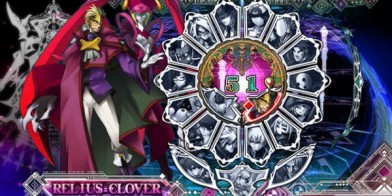
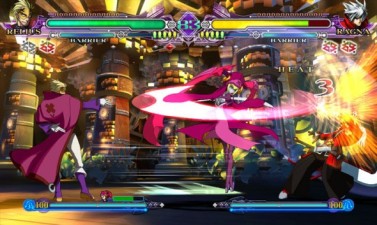

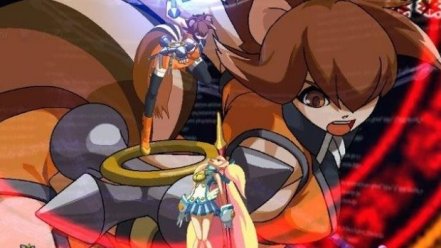

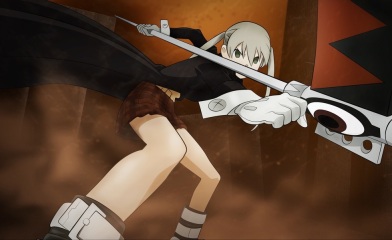
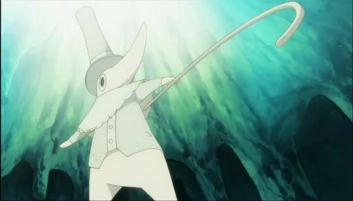



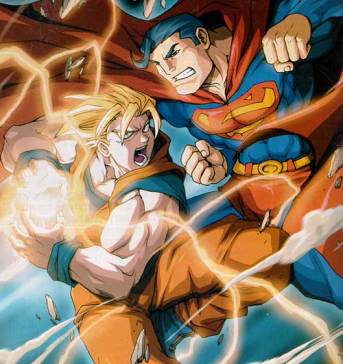
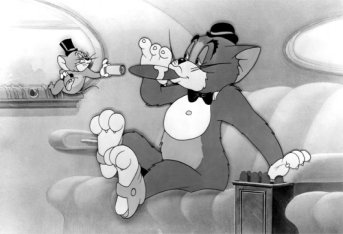


Understanding Anime: The Terms and Tropes
June 13, 2012 in Anime, Articles, Commentary | Tags: adaptation decay, anime, anime hair, bishounen, chibi, dub, dubbed, ecchi, harem, idiot hero, josei, light novel, magical girl, manga, mecha, moe, original video animation, otaku, ova, seinen, shojo, shonen, sub, tropes, tsundere, tvtropes, visual novel, yandere | Leave a comment
Much like any other medium, anime has a large amount of terms and tropes associated with it. Unlike the mostly self-explanatory terms used in video games or movies, those used in anime may not be well-recognized by the general public. Thus this article will define some of the more common terms and tropes used in anime and anime discussion, ones that I will use in my anime reviews on this blog. Some of the tropes are taken from the TVtropes website: I will credit the site when I introduce said tropes.
Basic Terms
OVA
Original Video Animation, or OVA, is a short-form anime series that generally runs between 60 to 80 minutes, though many are longer or shorter than that. These are the equivalent of direct-to-video films in the U.S., but boast a high level of quality, unlike most direct-to-video features. OVAs are often used to continue or retell the story of a TV anime series after they end their runs, or simply to avoid having to adhere to the standards and restrictions of TV. When an OVA is based off an already-existing anime series, they are generally more explicit and have higher animation quality due to their shorter length. OVAs can also be referred to as OAVs, or original animated video.
Subtitled vs English Dubbed Anime
Any anime series that is licensed for distribution in the U.S. receives an English dub, replacing all the Japanese voice actors (otherwise known as Seiyuu) with English voice actors. They sometimes are edited for content, or to remove references that English viewers wouldn’t get. The quality of dubs vary greatly, ranging from terrific to just plain awful. Some viewers prefer dubs, as they make the story easier to follow, and others proclaim all dubs awful and stick to the original Japanese acting with English subtitles. For series that I post reviews of, I’ll look at both the original Japanese and the dub versions if they are available, though I admit to having much higher standards for dubs than for the former.
Otaku
Otaku is a term that is used to describe obsessive fans of a specific hobby, series or medium. When used by English speakers, it usually refers to obsessive fans of video games and/or anime exclusively. It is used as an insult in both English and Japanese, more so than geek or nerd. The stereotypical Otaku is a fat, smelly and overall creepy male, who spends all his time in his room watching anime and/or playing video games. They usually own a large amount of anime action figures or other merchandise relating to their particular obsession. Another term that goes hand-in-hand with the Otaku stereotype in Japan is hikikomori, which describes a usually-male person who completely shuts out society and spends all their time on one or two solitary activities. Hikikomori are generally lazy and reluctant to devote their time to anything else. While rare, females can be considered Otaku as well.
Manga
Japan’s version of American comics, but more focused on individual, separate series than the Marvel and DC domination of the latter. Most anime series are actually adapted from manga, and manga thus contains the same art style and genres. The manga itself is drawn without color, excluding the chapter and volume covers. A variation of manga is the light novel, books that contain manga-style art and rarely exceed 200 pages. These are usually released in series just like manga, and are also a common source for anime adaptations. The American equivalent would be the graphic novel.
Genres
Shonen
This, along with the next 3 terms, refers more to a demographic targeted by anime and manga than an actual genre, but nonetheless are important when it comes to choosing series to watch or read. Shonen anime mostly targets pre-teen to teenage boy, though many Shonen series also have a large female fanbase. Shonen generally, but not always, features a mix of action, comedy and drama, without putting a lot of time into romantic themes that would bore their intended audience. The main protagonist, and the majority of the characters in general, are usually male. The definition of exactly what is and what isn’t Shonen is quite vague, with more mature series such as Death Note being viewed as Shonen. Most anime that airs on American TV is Shonen, and is often edited to target an even younger demographic.
Shojo
This is the gender-flipped version of Shonen: series animed at pre-teen to teenage girls. Shojo anime tends to give a bigger focus to romance and relationships, and (generally) has a more cutesy art style. They may or may not feature action, and tend to be slightly more risqué than Shonen series. As a result, Shojo series are rarely aired in the U.S., and when they are they’re often heavily edited in order to attract a SHONEN audience.
Seinen
Seinen anime series target adult males 18-40, which falls into the minority of viewers. Seinen is not associated with any one genre in-particular, but examples tend to aim for more realism than Shojo and Shonen anime, and often feature mature content or psychological themes. However, neither large amounts of violence nor psychological themes clearly define Seinen: it is the realism. Plenty of darker series like Claymore or Deadman Wonderland actually fall into the Shonen category. While Seinen series target males by definition, female viewers are just as likely to enjoy them. Most mature series that air outside of Japan are Seinen, including those that air on Adult Swim.
Josei
Josei’s the female version of Seinen, targeting adult women 18-40. Like Seinen, Josei is not associated with a particular genre, and aims for realism. Josei series tend to be set in the modern day, and focus on a female protagonist’s (adult) relationship struggles or growing pains. There are Josei series that feature a male protagonist, such as Nodame Contabile. Unlike Seinen, Josei series very rarely air in English markets.
Ecchi
Ecchi is a term that is too broad to define in Japanese, but the general English meaning of Ecchi is “fanservice”. While plenty of anime contain sexual content and jokes, a series in the Ecchi genre make such things a main focus. Some, but not all, Ecchi series push plot to the side in favor of featuring plenty of panty shots, double entendres and nudity. Ecchi series usually push the limits of what is acceptable to air on TV. Ecchi typically does not contain straight porn content and avoids EXPLICT nudity, so they rarely cross the line into the next genre. Most Ecchi is comedic by nature, and sometimes have OVA series made later that are more explict.
Hentai
Hentai is the dreaded step above (or below) Ecchi, essentially anime porn. Hentai is Japanese for “perverted”, after all. Hentai series usually do have plot, if not always compelling, and their themes can range from lighthearted to dark and gory. Hentai, of course, never airs on public TV.
Harem
A Harem series is a specific type of romantic comedy that features a male main protagonist along with many, many female characters. Said protagonist is often the ONLY visible male. Most, if not all, of the major female characters take a romantic interest in the protagonist at some point. This is the true defining factor of a Harem anime, as many other series feature elements of the genre, but do not have romance as the main focus. Additionally, some romantic comedies will only feature one male protagonist, but are not Harem series due to the male having only one love interest. True Harem series heavily cross over with the Ecchi genre as well. Some series are even “Reverse Harem”, featuring one female protagonist and many male characters with a romantic interest in her. Both Harem and Reverse Harem series usually target the Shonen or Shojo Demographic.
Yuri/Yaoi
Yuri and Yaoi are more general terms than genres, but are quite widely used. Yuri roughly translates to “girl love”, while Yaoi translates to “boy love”. Yuri and Yaoi series focus on homosexual relationships between girls and boys, respectively. Series can contain aspects of Yuri or Yaoi without being considered part of the “genre”. Unless a series focuses on romance and features a canon, homosexual relationship involving a main character, it won’t be classified as Yuri or Yaoi. Yuri and Yaoi are also used as general terms to describe girl-on-girl and guy-on-guy relationships or romantic moments.
Mecha/Real Robot/Super Robot
Mecha is one of the better-known genres exclusive to anime, featuring (usually) giant robots that are usually piloted by humans (or aliens, depending on the story). Mecha anime is usually dramatic in nature, but can veer into comedy on occasion, and can pretty target any Demographic. Mecha series tend to fall into one of two sub-categories: Real Robot or Super Robot. Real Robot series focus on the hard specs and science involved in piloting robots, and more often than not will use realistic designs, and sometimes feature more vehicle-like battle machines. Super Robot series, on the other hand, embrace Shonen tropes, featuring “cooler” robot designs that ignore hard science and technology in favor of over-the-top Science Fiction elements and intense space battles, in which the pilots prevail through sheer force of will. Mazinger Z was the first series to really popularize Mecha (specifically the Super Robot category) in the mid-70s. The long-running Gundam franchise was responsible for inventing and popularizing Real Robot series, and also created a popular Super Robot series with G Gundam.
Magical Girl
You’d think that this term simply refers to girls that can use magic, but it is more specific than that. A Magical Girl receives some form of magical powers via various means (they do NOT learn how to use magic by themselves or in a school of some sort), and focus on how said powers affect their lives, and usually feature some dark and threatening antagonists that the Magical Girl(s) have to fight to save the world. Thus, the Magical Girl term can refer to both the anime genre and to the actual girls themselves. The Japanese word for Magical Girl is “Mahou Shoujo”, and appropriately enough, most Magical Girl series target the Shojo Demographic. That said, there are plenty of series in the genre that target Shonen or even Seinen audiences. Seinen Magical Girl series are quite rare, and tend to be darker than other examples. Recently however, a Seinen Magical Girl series by the name of Puella Magi Madoka Magica has become incredibly popular in both Japan and English markets.
Appearance/Art Tropes
Anime Hair (from TVtropes)
It’s no secret that many, many anime characters have impossible hair. It’s one thing for a character to have pink or blue hair, but others sport impossibly long hair spikes or flat-out gravity defying hairdos. Look no further than Yu-gi-oh’s Yugi for an example of both unnatural hair color(s) and impossible hairdos. The trend with this trope is to give the most outlandish hair to main protagonists and other important characters, though this has become less common in recent series. I’d say that anime hair is actually more common in JRPGs than it is in anime.
Super-deformed/Chibi
A specific art style that depicts characters in a very exaggerated, cutesy manner, complete with giant heads, short bodies and large mouths. This is typically used in Shonen or general comedy series to show characters’ antics in a more amusing manner, or to lighten the mood in the midst of dramatic events. The chibi art style is sometimes used as the default style in shows such as Shin-chan, and in non-canon comedic shorts from otherwise serious shows like Shakugan no Shana. Anime-style video games and even some American cartoons utilize this style as well.
Bishonen
Put simply, this is a male character with very feminine features: a slender body with a lack of muscle, well-kept and often longer hair, and soft facial features. Such a character is easily mistaken for a girl as a result. This is extremely common among anime and anime-style video games, in order to make the characters appeal to female viewers/players. If the series in question specifically targets females, you can expect the vast majority of the male characters to be Bishonen (or bishie for short). There’s also the “bishie sparkle”: a cloud of twinkling stars that surround a Bishonen to humorously exaggerate their bishie-ness. This is occasionally used with very un-bishonen characters for the irony and laugh factor.
Moe
Pronounced “moh-eh”, is a term used to describe all things cute and adorable, mostly female anime characters. Moe characters are typically drawn with soft facial features and very large eyes, and appear innocent and youthful in comparison to other characters (even if they are an adult in age). They usually have an innocent outlook on life to match, and tend to be quiet and submissive in personality. It is also common for Moe characters to have some sort of charming quirk, ranging from strange hobbies to unique speech patterns or wearing costumes. However, the cute appearance is the only requirement for Moe: even some male characters can be considered Moe (usually kids). Moe characters are very common in Ecchi series, and in series that target the Shojo Demographic.
Personality Tropes
Tsundere
The Tsundere is an extremely common character type, used in all types of anime genre. A Tsundere is a (usually female) character, whose personality and general behavior ranges from sweet and kind to incredibly irritable and often violent on a daily basis. The sweet part of a tsundere is referred to as “dere dere” while the irritable part is called “tsun tsun”. This obviously allows for a huge amount of variation when it comes to how often a tsundere spends in dere dere mode as opposed to tsun tsun. However, most tsundere characters can be split into two categories: a Type A tsundere has the irritable “tsun tsun” as his/her default personality, and a Type B has “dere dere” as their default. Some characters switch between Type A and Type B depending on plot developments and character interactions.
The majority of romantic comedy and harem series feature female tsunderes, often as the love interest of the male lead. This sets up a scenario in which the tsundere will frequently abuse their love interest and deny being interested in them at all if they are a Type A, or shower them with kindness if Type B, only bringing out tsun tsun behavior if provoked. Sometimes they will only direct abuse towards their love interest, which is especially common with the Type B tsundere. While the tsundere trope is associated strongly with females, male tsunderes are not uncommon.
There even exist offshoots of the tsundere trope such as the Kuudere: a Type A tsundere who acts cold towards others, sometimes peppering their speech with snarky comments and thinly-veiled insults. Their dere dere side is typically reserved for their family and/or love interest. Another one of these offshoots, the Yandere, even gets its own section.
Yandere
A Yandere is a character that is very kind and sweet on the outside, especially to one specific loved one. But in contrast to a tsundere, who is kind on the inside, a Yandere is a PSYCHO on the inside. They are obsessed with a love interest or other loved one, to the point where they may violently attack or kill anyone they perceive as a “rival” to the affections of their love interest. In extreme cases, they will even attack said love interest if they feel that they’re going to lose him/her. Yandere characters are usually female, with male examples being much less common but existing nonetheless. The popular image of a Yandere is a younger girl with a Moe appearance, who uses their sharp object of choice to attack their “rivals”.
Idiot Hero (from TVtropes)
Even those whose only experience with anime comes from Pokemon or Dragonball Z should be familiar with this character type: it’s pretty self-explanatory anyway. An Idiot Hero often shows up as the main character of Shonen anime series, and is incredibly simple-minded and idealistic in comparison to others. However, the Idiot Hero is often an incredibly powerful fighter, who enjoys fighting for the fun of it (but NEVER enjoys killing). The Idiot Hero inspires their allies with their pure fighting spirit and never-give-up attitude, and is usually so thickheaded as to be incorruptible. The intelligence of the Idiot Hero can range from slightly dim-witted to a complete moron who can barely comprehend basic math. It should also be noted that this trope does not apply to characters who are generally of average intellect, or those who fake stupidity in order to trick enemies.
Idiot Heroes are usually male, and are almost as common in non-Japanese animation as they are in anime.
Other
Visual Novel
Imagine a combination of books, anime and video games: this is essentially what a Visual Novel is. It is a story told using anime-style still images, text and sound, that usually presents the player with choices at key moments in the story. The story will then progress in a different manner depending on their choices, similar to a choose-your-own-adventure book. Some Visual Novels focus on telling a compelling story, others demand a larger amount of participation from the player, ranging from solving mysteries or puzzles to segments of fighting game gameplay. One specific genre of Visual Novel is the dating sim: which features two or more love interests that the player can pursue based on their choices. Many Visual Novels that are not pure dating sims may contain elements of them. Many dating sim-type VNs also contain full-on hentai scenes, making them suitable only for adults. Visual Novels that contain such content are branded as “eroge” or “h-games”, which stands for hentai-game.
Some of the most recognized Visual Novels include Capcom’s popular Ace Attorney series and Type-Moon’s Fate/Stay Night. Many games in other genres also contain elements of Visual Novels or dating sims, such as Persona 4 and Blazblue. Visual Novels are almost exclusively developed in Japan, and the few Western examples are modeled after Japanese VNs. I will typically not post reviews for Visual Novels on this blog, but I will be reviewing one of the few Western examples in the future.
Adaptation Decay (from TVtropes)
This trope is more of a universal media issue than one that only relates to anime, but it is nonetheless very widespread in anime. Whenever a book is turned into a movie, or a manga or video game turned into an anime, some things will more than likely be changed. Sometimes they have to cut out scenes so the series or movie won’t drag on, other times they’ll flat out add or remove characters or change the ending. And in the worst case, they’ll just throw away the original plot entirely and make up a new one in the name of making money. Sometimes movies or series are made better due to these changes, but this trope is specifically about when they end up worse.
When dealing with anime specifically, the fact is that most anime is adapted from manga, light novels, Visual Novels or video games. When anime adaptations are made of manga or light novel series that are still ongoing, the writers will often have to come up with an ending of their own, or simply have the series end without a conclusion. Either way, the quality of the anime will likely suffer as a result. For Visual Novels, writers often have to combine the multiple paths that the story can take based off of player choices, sometimes resulting in a muddled plot. The translation of anime series into other languages can result in decay as well, especially if dialogue is heavily changed or if it is edited to target a younger audience.
The fact that most anime series are adapted from written works, and typically have a set amount of episodes, actually gives it an advantage over other narrative television shows. Even if a series gets popular enough to last multiple seasons, it can only go on for as long as its source material does. Live-action dramas, sitcoms and non-Japanese animated series tend to either disappear after one season due to lack of interest, or they run for so long that the plot drags along at a snails pace or the series becomes stale and gets cancelled before it can get a proper conclusion.